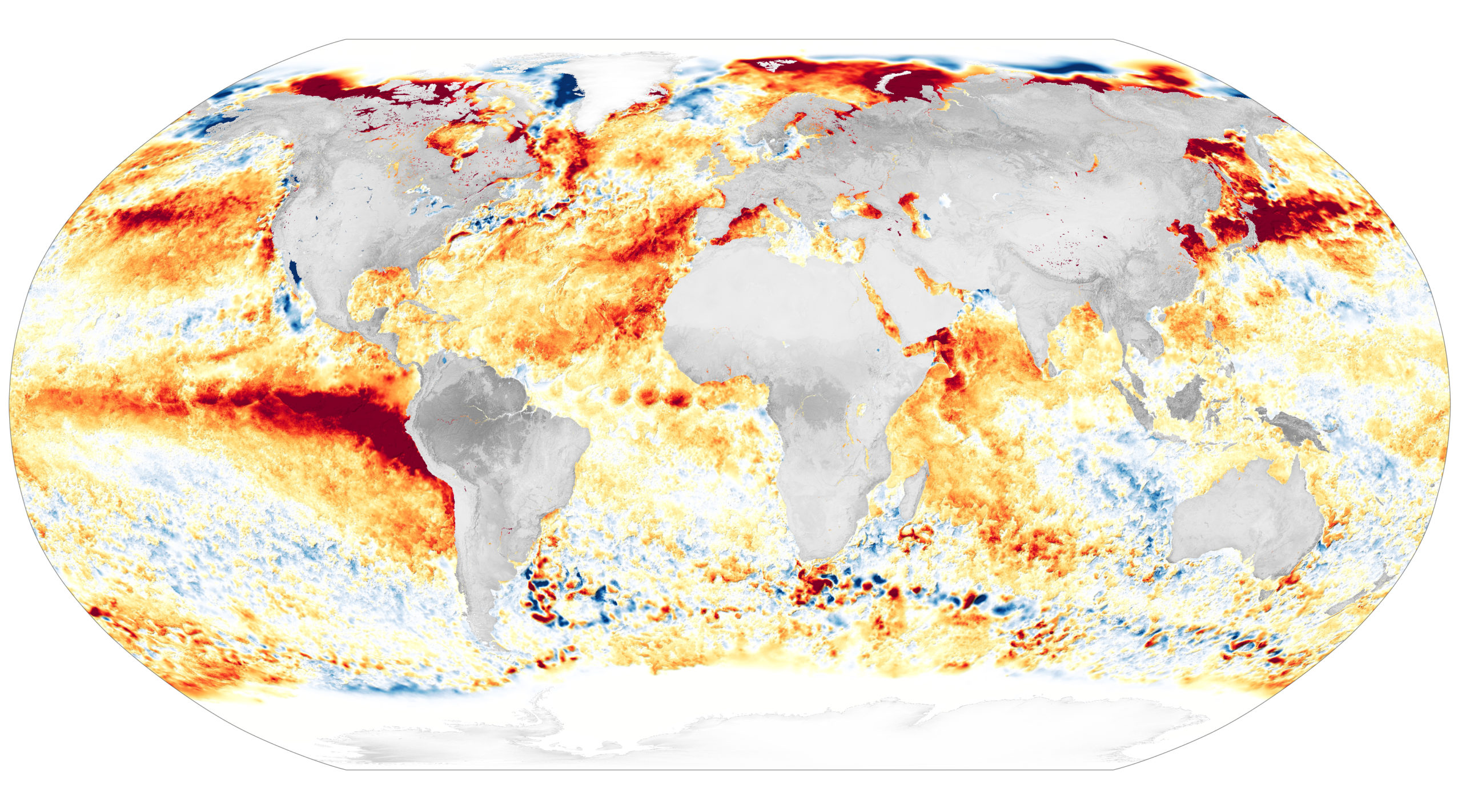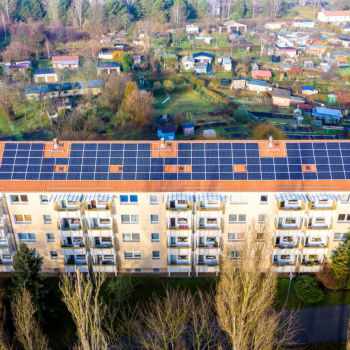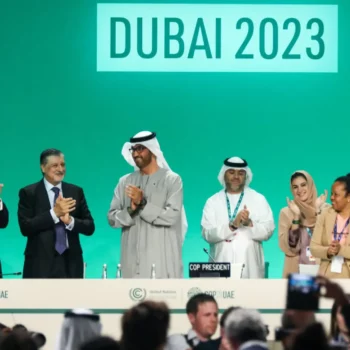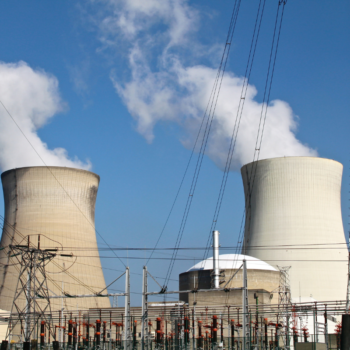|
|
The warming in 2023 is 0.2°C higher than the models predicted, which is a very large value on a global scale. If the anomaly does not stabilize by August, the world will find itself in uncharted waters. The climate system is fundamentally changing, experts warn.
These conclusions stem from the latest “State of the Climate Report” by the World Meteorological Organization (WMO). The WMO report confirms what we wrote about when discussing data from the EU climate service Copernicus – that 2023 was the hottest year in the history of measurements.
According to the WMO, the average temperature in 2023 was 1.45 degrees Celsius higher than the pre-industrial level – that is, from the times when humans did not emit gigantic amounts of gases (such as carbon dioxide) from fossil fuels into the atmosphere, which cause the planet to warm.
Overheated Earth
In accordance with the 2015 Paris Agreement, humanity should limit the increase in the concentration of greenhouse gases in the atmosphere so as to keep warming in the range of 1.5-2°C by 2100. There is no indication that this will happen.
In the notable book “Overheated Earth”, Prof. Bill McGuire claims outright that humanity will cross the 1.5°C threshold without any effort. Worse, the concentration of CO2 in the atmosphere is so high and is growing so fast that unless there is a revolution – and we know there won’t be, McGuire soberly states – a temperature increase of more than 2°C is already a foregone conclusion.
Already today, such a rapid rise in temperature is causing a cascade of negative effects on ecosystems and humanity, the WMO report warns. The climate crisis is deepening before our eyes.
In 2023, as much as 90 percent of the oceans were hit by a heat wave that caused losses in marine ecosystems – e.g. the dying of coral reefs. Ocean acidification is increasing. “Changes that used to take millions of years are now occurring over centuries. Increased ocean acidification is causing the death of organisms that build external calcareous skeletons and shells, as well as coral reefs”
Ocean acidification is increasing.
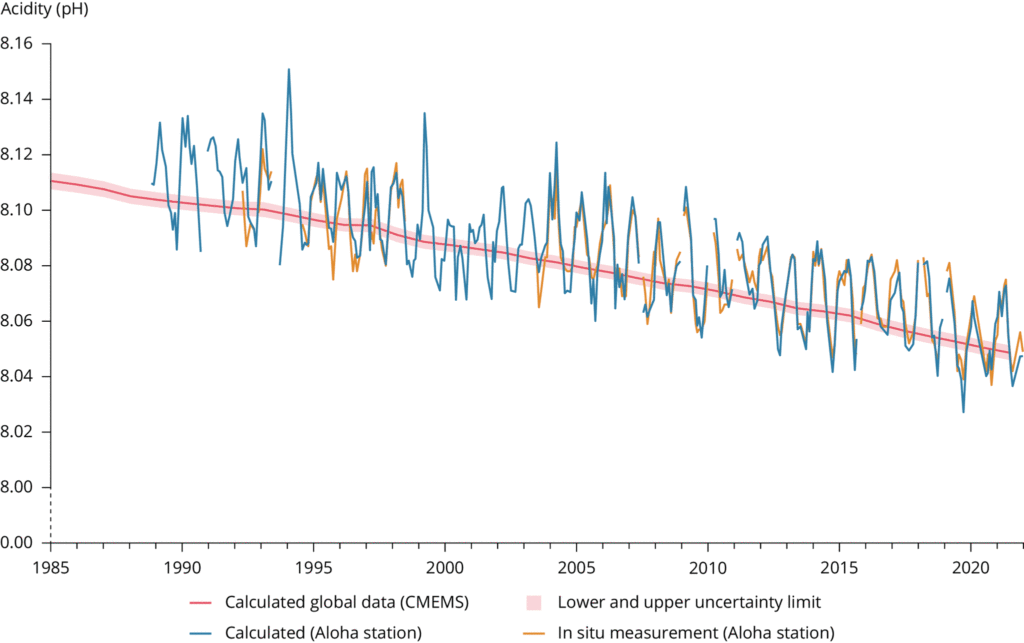
Ocean Has a Fever
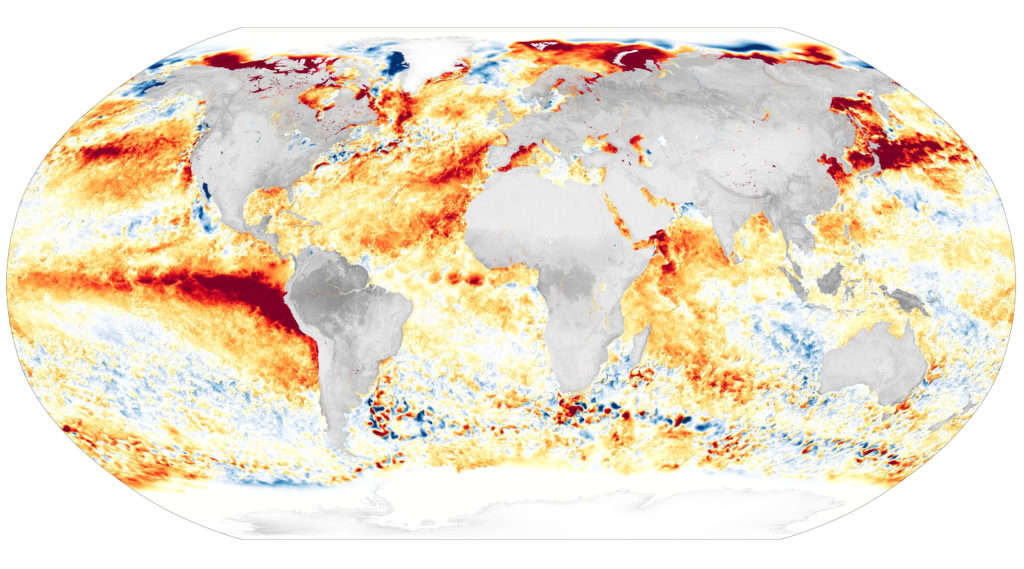
These organisms are the basis of the food chain for many marine species, and coral reefs themselves are valuable ecosystems. The effect of increasing ocean acidification will therefore be a significant impoverishment of their biodiversity – which humans also benefit from.
Drought, Famine & Mass Migration
The WMO report also draws attention to other highly disturbing phenomena caused by the rising temperature of the Earth. The extent of glaciers has shrunk to a level not seen since 1950, when systematic measurements began. This is a harbinger of a lack of water in river valleys fed by glaciers and, consequently, famine.
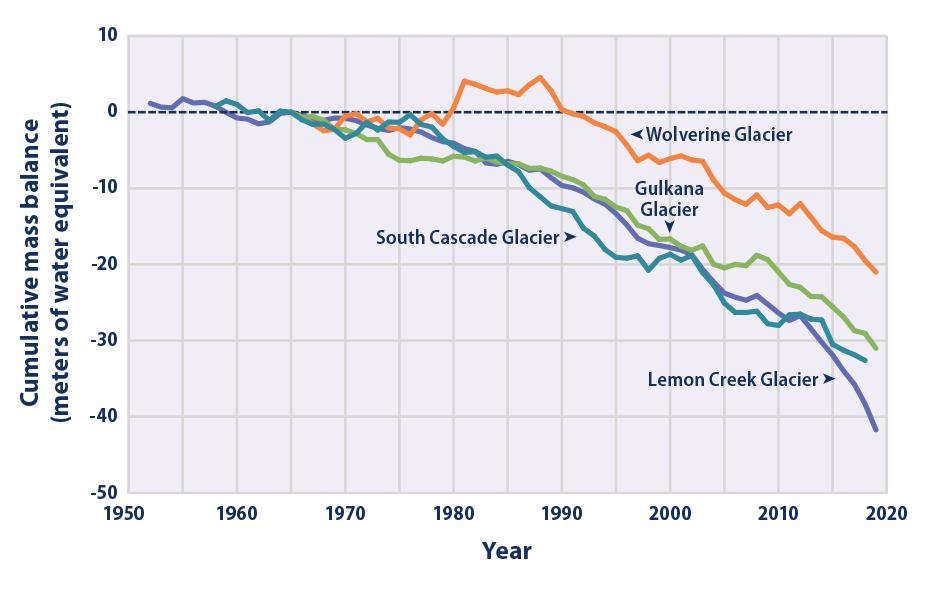
It is also due to the progressing climate catastrophe that the number of people who do not have secure access to food has increased dramatically – from 149 million before the COVID-19 epidemic to 333 million in 2023. Although food production and prices worldwide are also influenced by other factors, including in particular Russia’s aggression against Ukraine, climate change is exacerbating the problem.
The number and intensity of extreme weather events is also growing rapidly. Cyclone Mocha in the Bay of Bengal in May 2023 led to the migration of 1.7 million coastal residents.
In the second half of July 2023, temperatures in Italy broke a record – 48.2 degrees in the shade was recorded there. Five consecutive seasons of drought in the Horn of Africa (Kenya, Somalia, Ethiopia) have led to a famine that has caused the internal migration of 3 million people.
Migrations caused by extreme weather are just a prelude to the exodus of people that will occur as a result of sea level rise. Publication: Groundswell Part 2: Acting on Internal Climate Migration (Source)
The WMO report states that:
the average rate of sea level rise worldwide in 2014-2023 turned out to be more than twice as fast as in 1993–2002
“Climate change is more than just a rise in temperature. What we observed in 2023, especially due to the unprecedented warming of the oceans, the retreat of glaciers and the loss of sea ice in Antarctica, is particularly worrying,” said WMO chief Celesta Saulo, quoted in the organization’s communiqué.
Something doesn’t add up here…
To make matters worse, some scientists suspect that the warming in 2023 is 0.2°C greater than climate models predicted, which is a very large value on a global scale.
“For the last nine months, average land and sea surface temperatures each month have exceeded previous records by as much as 0.2°C – that’s a huge difference on a global scale. The overall warming trend is not surprising given increasing greenhouse gas emissions, but this sudden rise in temperature substantially exceeds climate model predictions,” climatologist Gavin Schmidt, director of the NASA Goddard Institute for Space Studies, wrote in “Nature.”
“If the anomaly does not stabilize by August, then the world will find itself in uncharted waters. This could mean that the warming planet is already fundamentally changing the way the climate system functions, much faster than scientists predicted,” Schmidt added.
The Costs of Catastrophe
As usual with similar reports, the authors also try to convey optimistic news, although there is not much of it. The WMO report primarily mentions the boom in renewable energy investments – last year, 510 gigawatts of renewable energy installation capacity were added worldwide, the most in the last two decades. However, there is no mention of nuclear energy.
Secondly, so-called climate financing – i.e. all expenditures and investments related to slowing down the effects and adapting to the climate crisis – reached $1.3 trillion in 2021-2022. This is almost a twofold increase compared to 2019-2020, although still only 1 percent of global GDP.
Despite the increase, expenditures still remain many times lower than needed. To keep the world on the (de facto only hypothetical) course so that the temperature increase does not exceed 1.5°C by the end of the century, annual expenditures should reach $9 trillion by 2030. These are huge sums, but still smaller than the costs that the lack of response to the crisis will entail – these are estimated at $1,266 trillion in the period 2025-2100 and are most likely dramatically underestimated, the WMO warns.
Climate procrastination is ravaging the Earth
warns the WMO report. “What we can measure, we can manage. That’s why these reports are important – we need to understand how fast the planet is changing and what is causing these changes,” Dr. Julie Arblaster, climate scientist at Monash University in Melbourne, Australia, told the BBC and added:
“If we don’t reduce emissions by half by 2030, it will be increasingly difficult to adapt to climate change. Weather extremes such as heat waves and heavy rainfall are already affecting society and nature in many ways.”
Identifying the Biggest Culprits
Given the accelerated pace at which the Earth’s temperature is rising and the extreme weather events it induced in 2023, confronting this issue has become imperative. The initial step towards tackling this global challenge is pinpointing the sources of emissions that contribute to the planet’s warming. Such knowledge is integral in crafting effective adaptation and mitigation strategies to curb these adverse impacts.
A Council on Foreign Relations’ World 101 report unveils poignant findings, placing China at the forefront. China was responsible for 26% of global greenhouse gas emissions in 2020, attributed mainly to its brisk economic upsurge. The list continues with the United States (11%), India (7%), the European Union (6%), and Russia (3.8%), among others, including Indonesia, Brazil, Japan, Iran, and Canada.

Delving into long-term emission trends provides a broader perspective, crucial for shaping climate change policies. Although annual statistics highlight the contemporary significant contributors to greenhouse gases, they often overlook historical emissions.

Having industrialized earlier, developed countries accumulate a vast portion of historic emissions despite their current efforts to transition to cleaner energy sources. For instance, while China leads in annual emissions due to its rapid development phase today, it accounts for only 13% of historical emissions.
The primary sector implicated in these emissions is energy, encompassing electricity and heat for households, industries, construction, and transportation. Other significant contributors include industrial processes, agriculture, land use changes and forestry, waste management, and various bunker fuels.

Understanding the contributors—countries and sectors—enables policymakers to direct attention where needed most. Whether it’s redefining international trade policies, bolstering green job sectors, aiming for energy independence, or enforcing environmental safety regulations, knowing the largest emitters informs targeted action.
What Needs to Be Done
The urgency conveyed by the recent spike in Earth’s temperature and subsequent disruptive weather patterns in 2023 underscores the necessity of immediate action. Identifying emission hotspots is just the beginning; acknowledging developed nations’ historical responsibility and fostering global collaboration are vital steps forward. Nations that have benefited from early industrialization carry a significant part of the blame for cumulative emissions and, therefore, a substantial share of the solution to global warming.
This realization highlights the importance of international cooperation in combating climate change. No single country can tackle the issue in isolation, as greenhouse gasses know no borders. Shared knowledge and technology transfer from developed to developing nations can accelerate the adoption of clean energy and sustainable practices worldwide, and these can be done in various ways.
In its 2018 report, the Intergovernmental Panel on Climate Change (IPCC) examined various paths to limit global warming to 1.5°C above pre-industrial levels. The report outlines four main strategies for reducing carbon dioxide emissions, illustrated with a graph indicating their potential impact.
- The Innovation-driven strategy (P1): This approach focuses on pioneering advancements that lower our need for energy while improving living standards globally, particularly in the Global South. Reduced energy needs facilitate a smoother shift towards renewable sources. Additionally, reforestation efforts are enhanced to remove more CO2 from the atmosphere.
- The Sustainability-focused approach (P2): In this scenario, there’s a concerted effort to lower energy consumption in production and service sectors, bolstered by international collaboration and a shift towards more sustainable consumption practices. Renewable energy is central in cutting CO2 emissions, complemented by carbon capture and storage technologies at some power plants. Moreover, effective land management and reduced agricultural emissions contribute to this goal.
- The Middle-of-the-road option (P3): This scenario anticipates increased future energy demand but counters this by upping the contribution of renewable and nuclear energy and cutting down on fossil fuels. Carbon capture and storage are employed where fossil fuels remain in use. Bioenergy plants, which utilize crops like switchgrass for power generation and then sequester the resulting CO2, are part of this mix.
- The Energy-intensive pathway (P4): This scenario reflects a future where economic growth and globalization spur higher greenhouse gas emissions due to car usage, frequent flying, and meat consumption. This scenario relies on a diverse energy mix that includes oil, gas, nuclear power, and renewables. To address the high level of emissions anticipated over the next few decades, this strategy emphasizes extensive use of carbon capture and storage along with CO2 removal technologies in bioenergy power plants.
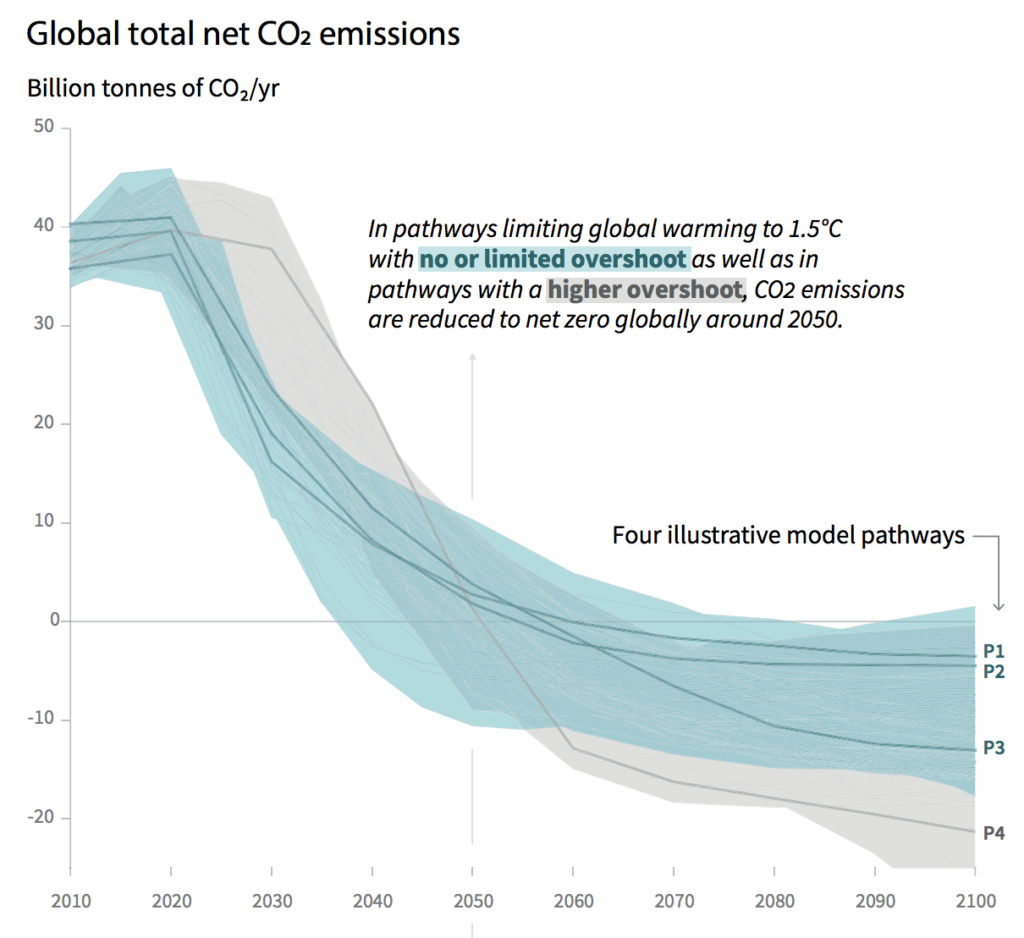
source: https://scied.ucar.edu/learning-zone/climate-solutions/solving-climate
Each of these scenarios offers a different route towards mitigating climate change by reducing CO2 emissions and tackling the challenge of global warming. They suggest varying levels of technological innovation, lifestyle adjustments, and policy measures that collectively could steer the planet toward a more sustainable future.
The underlying themes of these scenarios emphasize not just the shift to cleaner energy sources but also the importance of comprehensive strategies that include changes in consumption patterns, advancements in technology, and international collaboration. The success of these approaches hinges on their collective implementation, showcasing that there is no single solution to climate change. Instead, a multifaceted approach that adapts to different global contexts and economies is crucial.
However, given the growing likelihood of surpassing the critical 1.5°C global warming threshold, our focus must extend beyond mitigation efforts alone.
Adaptation strategies also play a crucial role in enhancing resilience against the adverse effects of climate change. These strategies are not just supplementary but are essential components of a comprehensive approach to climate action. They help communities, ecosystems, and economies adjust to current and anticipated changes, reducing vulnerability and avoiding potential damages.
Adaptation Strategy Recommendations
- Climate-Resilient Infrastructure: Developing infrastructure capable of withstanding extreme weather events is vital. This includes upgrading buildings, roads, bridges, and water supply systems to tolerate floods, hurricanes, and heat waves.
- Sustainable Agriculture Practices: Implementing drought-resistant crops, efficient water use techniques and soil conservation methods can significantly increase food security in changing climatic conditions.
- Coastal Protection Measures: Rising sea levels threaten coastal communities, but measures such as seawalls, mangrove restoration, and beach nourishment projects can protect shorelines and reduce erosion and flooding.
- Early Warning Systems: Advances in technology allow for more accurate predictions of extreme weather events, giving communities time to prepare and minimize damage.
- Urban Greening: Increasing green spaces in cities can combat heat islands, improve air quality, and enhance urban biodiversity, making cities more livable and resilient.
- Water Resource Management: Adapting water management practices to ensure a reliable supply of fresh water through reservoirs, rainwater harvesting, and desalination can address water scarcity exacerbated by climate change.
Some Case Studies of Successful Implementation of Climate Change Adaptation Strategies
The Netherlands’ Flood Defense System
Recognizing its vulnerability to sea-level rise, the Netherlands has innovated with an extensive system of barriers, dikes, and storm surge barriers designed to protect its low-lying lands. This “Delta Works” project is considered one of the most sophisticated flood defense mechanisms in the world.
Bangkok’s Park System for Flood Mitigation
Bangkok, a city prone to flooding, has developed an innovative urban planning solution through the creation of water retention parks. These parks are designed to be flood zones during the rainy season, absorbing and storing large volumes of water, which significantly reduces the impact of floods on the urban area. This approach not only mitigates flood damage but also enhances urban green space.
Kenya’s Drought-Resistant Crops
Kenya has successfully implemented drought-resistant maize varieties developed through genetic modification and traditional breeding techniques in response to prolonged drought periods affecting agriculture. These crops have enabled farmers to maintain yields even in conditions of low rainfall, safeguarding food security in the region.
Singapore’s Water Reclamation and Desalination
With limited freshwater resources and increasing demand due to its growing population, Singapore has become a global leader in water management strategies. Its two-pronged approach involves high-tech desalination plants that convert seawater into drinking water and reclamation projects that purify wastewater with cutting-edge technology for reuse. These initiatives ensure a sustainable and reliable water supply for the nation.
Mumbai’s Heat Action Plan
Rising temperatures pose a severe health risk, especially to vulnerable populations. Ahmedabad has implemented India’s first comprehensive Heat Action Plan. The plan includes a warning system for impending heatwaves, public awareness campaigns on avoiding heatstroke, and the establishment of cooling centers offering refuge from extreme heat.
The Great Green Wall Initiative Across Africa
Spanning across several African countries, the ambitious Great Green Wall project aims to combat desertification, one of the critical impacts of climate change in the Sahel region. The initiative hopes to restore degraded land, increase biodiversity, capture carbon dioxide, and create jobs among local communities by planting a vast belt of trees stretching thousands of miles across the continent.
These case studies highlight the potential for innovative adaptation strategies to mitigate the effects of climate change and transform challenges into opportunities for sustainable development and enhanced quality of life. Each example leverages local knowledge, technological advancements, and community engagement to address specific climate vulnerabilities, illustrating the power of tailored solutions in building resilience.
If you would like to learn more about climate change adaptation strategies, refer to the following sources:
- The United Nations offers a detailed collection of case studies on national adaptation planning.
- The United States Environmental Protection Agency has amassed various case studies on climate change adaptation.
- The European Environment Agency has compiled 10 European case studies demonstrating existing measures to enhance resilience to extreme weather and slow-onset events and bolster climate change adaptation.
Conclusion
The latest report on climate change tells us an undeniable truth: Earth is getting warmer at an alarming rate, which has profound effects that many of us are already experiencing. This upward trend in global warming is not just a fleeting anomaly but a stark indicator of how human activities have pertinently shifted the balance of our planet’s climate system. The evidence makes it clear that immediate, decisive action is required to curb emissions and transition towards sustainable practices.
It’s crucial for everyone—people, communities, and countries—to make wise choices now to protect the future. We’re at a critical point where we need to work together, be creative, and stay strong to deal with these climate changes. This will make sure our planet remains habitable.
